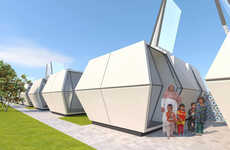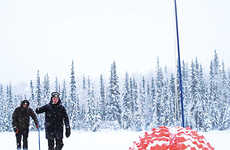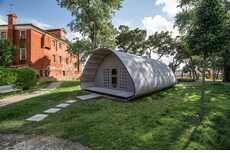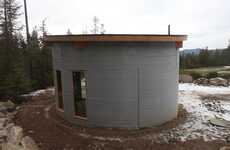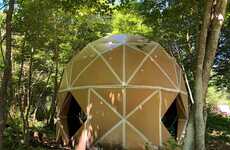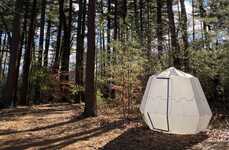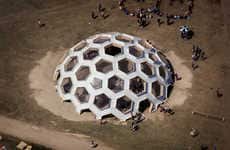
The Almost Home Shelter is a Temporary Home for Disaster Survivors
Amelia Roblin — October 6, 2011 — Art & Design
References: coroflot & yankodesign
Humans have no power over the whims of nature, though with the skills and resources that societies do have, not enough are put to use in preparation for the aftermath of catastrophes.
The Almost Home Shelter solves a pressing need for temporary dwellings to protect people who have lost their homes in earthquakes, hurricanes, tsunamis and more. Two major obstacles are money and storage, but this concept by Katrina Epperson challenges both.
Costs are reduced by manufacturing standard parts for these compact rectangular residences and leaving the task of assembling them to the survivors of the natural disaster. This way, abodes for entire communities can remain tightly packed and tucked away before and between uses, and once each is erected, a modular Almost Home Shelter can be loosely customized to the individual family's requirements.
The Almost Home Shelter solves a pressing need for temporary dwellings to protect people who have lost their homes in earthquakes, hurricanes, tsunamis and more. Two major obstacles are money and storage, but this concept by Katrina Epperson challenges both.
Costs are reduced by manufacturing standard parts for these compact rectangular residences and leaving the task of assembling them to the survivors of the natural disaster. This way, abodes for entire communities can remain tightly packed and tucked away before and between uses, and once each is erected, a modular Almost Home Shelter can be loosely customized to the individual family's requirements.
Trend Themes
1. Modular Emergency Shelters - The trend of modular emergency shelters provides an opportunity for innovative solutions and cost-effective options to protect disaster survivors.
2. Community-driven Assembly - The trend of community-driven assembly of shelters opens up possibilities for self-reliance and empowerment among disaster survivors.
3. Compact and Customizable Dwelling - The trend of compact and customizable dwellings offers opportunities to create flexible and personalized living spaces for disaster-affected families.
Industry Implications
1. Construction - The construction industry can explore disruptive innovation by developing modular and easy-to-assemble emergency shelter solutions.
2. Manufacturing - The manufacturing industry has the potential to disrupt the market by producing standard parts for modular emergency shelters at a large scale.
3. Disaster Relief - The disaster relief industry can leverage the trend of modular emergency shelters to provide more efficient and cost-effective solutions for displaced populations.
6.1
Score
Popularity
Activity
Freshness

